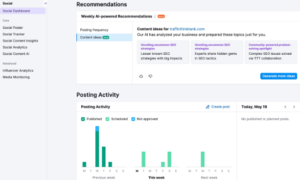1. Analyze bottlenecks
Bottlenecks are the single biggest hindering factor to automating your ecommerce operations. There can be several types of bottlenecks that can plague your business. Some common bottlenecks include manual customer service, lack of payment options, cart abandonment, inability to support high volume transactions and more. Having a few of these simultaneously can significantly limit the sales of your ecommerce business during peak buying periods. You need to be able to clearly identify and analyze these bottlenecks before using any tools.
Once you have identified what bottlenecks are affecting your business, take time to deliberately address them one at a time. Some of them don’t require any additional tools added to your operations, so it’s easiest to start with those first. An example of this can be hiring an extra staff member to delegate repetitive tasks. You can use a virtual assistant to take care of administrative needs while you focus on higher leverage activities.
You can start addressing your bottlenecks by making a list of them and tackling them in order of impact on your business. You can start using a variety of tools to streamline your operations once your bottlenecks are addressed; this will make the impact of using any software or tool much more meaningful for your business.
2. Chatbots
One of the best ways you can automate your customer service operations is to use software like help desk software and chatbots. Chatbots are able to have mature conversations with your customers via text and speech when they land on your website. This can help funnel visitors to your website and answer their common questions instead of directly referring them to a customer service representative. Your business may already be using real customer service personnel and this can help offload their workload significantly. Chatbots will allow you to triage all of the inquiries that come to your business and only the important ones will reach your customer support staff.
With a great chatbot tool, you’ll have a 24/7 customer service member for your business. Any customer located anywhere in the world can land on your website and get immediate assistance from your chatbot. Chatbots can be personalized to help answer the questions of your common customer personas and this can help improve your user experience dramatically. Ecommerce chatbots can help track packages, answer FAQs and submit support requests. This can save your employees time, so they can focus on activities that can increase your marketing ROI.
3. Utilize CRMs
Customer experience is important for all businesses, but in ecommerce it can be directly tied to sales. With customers enjoying great experiences from giants like Amazon.com, the standard for customer service is exceptionally high for ecommerce companies. Using manual and outdated processes not only results in more work for your team, it also results in losing customers. CRMs enable ecommerce companies to keep in touch with customers across each part of the sales process. By using a CRM, you can improve your marketing campaigns, optimize your after-sales service and automate many manual tasks.
In addition to providing a great customer experience, CRMs also help reduce costs for ecommerce businesses. Most ecommerce companies hire customer service specialists to deal with basic issues that customers can solve on their own. With a CRM, you can set up a self-help service for your customers and they can check where their order is and handle frequently asked questions. Additionally, CRMs prevent you from making data entry errors while highlighting where your ecommerce business is spending the most money. CRMs also allow you to integrate other tools that can help you optimize your SEO services, vendor relationships and more. This will help you manage all of your customer relationships directly from your CRM.
4. Leverage fulfillment automation tools
Fulfillment is one of the largest cost centers for ecommerce companies. For most ecommerce companies, this is a manual and labor intensive process that’s often just seen as a cost of doing business. Fulfillment automation allows ecommerce businesses to leverage tools and services that enable them to optimize their supply chain and serve their customers better. Examples of fulfillment automation tools include order fulfillment software, computer vision, automated warehouses, third party logistics providers and more.
Using one or more of these services can help outsource and automate your entire fulfillment process. Instead of relying on manual labor to pick, pack and ship each order you get, you can leverage software and automated warehouses. This allows you to make substantial improvements in your fulfillment KPIs like transit times, shipping costs and more. You can start using fulfillment automation by picking one area of your fulfillment process and exploring which automation tools exist to accelerate that specific process.
5. Email marketing
Email marketing is a core component of any ecommerce business. Since email marketing allows ecommerce businesses to create and grow their email list, many ecommerce businesses use it as their primary marketing channel to generate more sales. Although email marketing is a very profitable marketing channel, it can turn into a full-time task if it’s done manually. Many ecommerce customers expect a personalized email experience and this can require significant work on the ecommerce company’s end.
The great news is that there are hundreds of email marketing software and tools that can automate the vast majority of email marketing efforts. From sending emails to auto replies, email marketing tools allow you to set any parameters you’d like and it can be completely automated for all of your customers. For example, you can upload your email list to an email automation software with the first names, email addresses, companies, etc. of all your contacts. When you send your email, you can add any variables you’d like so the email will look very personalized without any additional work on your end. This is a great tool to use if you have a large email list and you are looking to personalize your email campaigns.



































